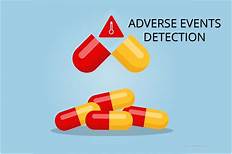Adverse event reporting is a critical component of clinical trials, ensuring participant safety and the integrity of the study data. Here’s a detailed look at the responsibilities and procedures involved in adverse event reporting: Responsibilities 1. Investigators Identify and Report: Investigators are responsible for identifying, documenting, and reporting adverse events (AEs) and serious adverse events (SAEs) that occur during the study. They must ensure that these events are reported to the sponsor and, when applicable, to regulatory authorities. Participant Safety: Investigators must assess the causality of the adverse event in relation to the investigational product and take necessary actions to protect participants' safety, including stopping the treatment if needed. Informed Consent: Ensure that participants are informed about potential risks, including the possibility of adverse events. 2. Sponsors Monitoring and Management: Sponsors are responsible for overseeing the collection, monitoring, and evaluation of adverse events across all study sites. They must ensure that the data are accurate and that appropriate followup actions are taken. Reporting to Authorities: Sponsors must report serious adverse events and any unexpected adverse reactions to regulatory authorities in a timely manner. Updating Protocols: Based on adverse event data, sponsors may need to update the study protocol, informed consent documents, or safety monitoring plans. 3. Regulatory Authorities Oversight: Regulatory authorities (such as the FDA, EMA, etc.) provide guidelines and requirements for adverse event reporting. They oversee the compliance of sponsors and investigators with these requirements. Review and Action: They review adverse event reports and may take regulatory actions, such as modifying study approvals or requiring additional safety measures. 4. Ethics Committees Review: Ethics committees (Institutional Review Boards or IRBs) review adverse event reports to ensure that the study remains ethically sound and that participant safety is being maintained. Procedures 1. Adverse Event Identification and Documentation Definition: Adverse events are any undesirable experiences or outcomes occurring to a participant during the study, whether or not they are considered related to the investigational product. Serious adverse events (SAEs) involve significant outcomes such as death, lifethreatening conditions, hospitalization, or persistent disability. Documentation: Detailed documentation is required, including the event description, severity, outcome, and causality assessment (i.e., whether the event is related to the investigational product). 2. Reporting Timelines Immediate Reporting: Serious adverse events must be reported immediately or within a specified time frame (often within 2448 hours) to the sponsor and relevant regulatory authorities. Periodic Reporting: Routine or less severe adverse events are typically reported in periodic safety updates, as outlined in the study protocol. 3. Causality Assessment Assessment: Investigators must determine whether the adverse event is related to the investigational product. This involves assessing the timing, nature, and other factors that may link the event to the study drug or procedure. Documentation: Causality assessments should be documented and reported to the sponsor and regulatory authorities. 4. Followup and Action Further Information: Additional followup may be required to gather more information about the adverse event and to monitor the participant’s recovery. Action Plan: Based on the nature and seriousness of the event, actions may include modifying the study protocol, enhancing monitoring, or temporarily halting the study. 5. Data Analysis Safety Monitoring: Regular analysis of adverse event data is conducted to identify trends, new safety signals, or unexpected risks. Safety Reports: Periodic safety reports, including safety summaries and annual reports, are submitted to regulatory authorities and ethics committees. 6. Communication To Participants: Provide information to participants about any risks associated with the study based on adverse event findings. To Investigators: Communicate updated safety information and necessary changes to the study protocol to all participating investigators.Adherence to these responsibilities and procedures ensures that adverse events are handled systematically, safeguarding participants and maintaining the integrity of the clinical trial.
To learn more from related topics, please visit our website or newsletter at https://medipharmsolutions.com/newsletter/


No Comments